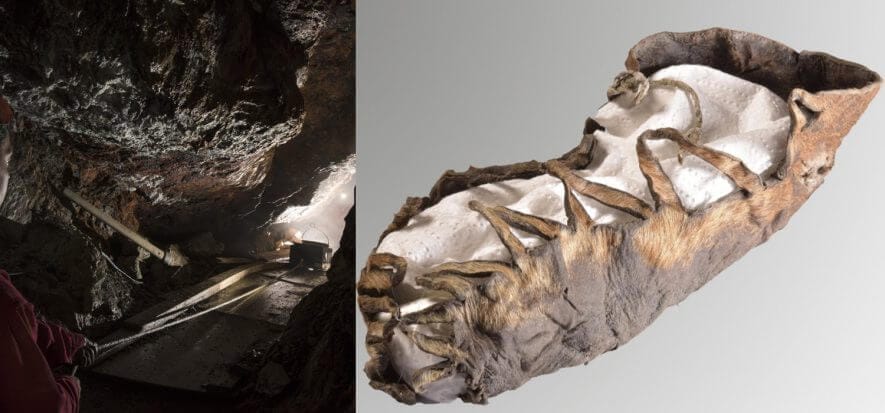Thomas Stöllner‘s research team from the German Mining Museum in Bochum-Leibniz has discovered a child’s shoe, complete with linen laces, dating back over 2,000 years. And he did so in an area where rock salt mining was already taking place in the Iron Age. Finding ancient leather shoes during archaeological excavations brings to light not only a valuable find, but also leather’s ability to withstand centuries. But, in the case of the find at the excavation site in Dürrnberg near Salzburg (Austria), much is owed to the action of salt. The shoe size would correspond to the current European size 30. It was made, as we said, in the 2nd century BC.
A child’s shoe
Was a small miner the owner of this shoe that has come down to the present day? Difficult to tell to date, but excavations in the area will continue. The archaeologists have also found other organic remains: a fragment of a wooden shovel and remains of fur with a lacing. “For decades, our research activities in Dürrnberg have provided us with valuable finds to scientifically explore early mining activities. The condition of the shoe found is exceptional”, recalled Stöllner. “Organic materials generally decompose over time. Finds such as this child’s shoe, but also textile remains or excrement such as those found in Dürrnberg, offer an extremely rare insight into the life of Iron Age miners”.
Photo from the German Mining Museum Bochum-Leibniz
Read also:










